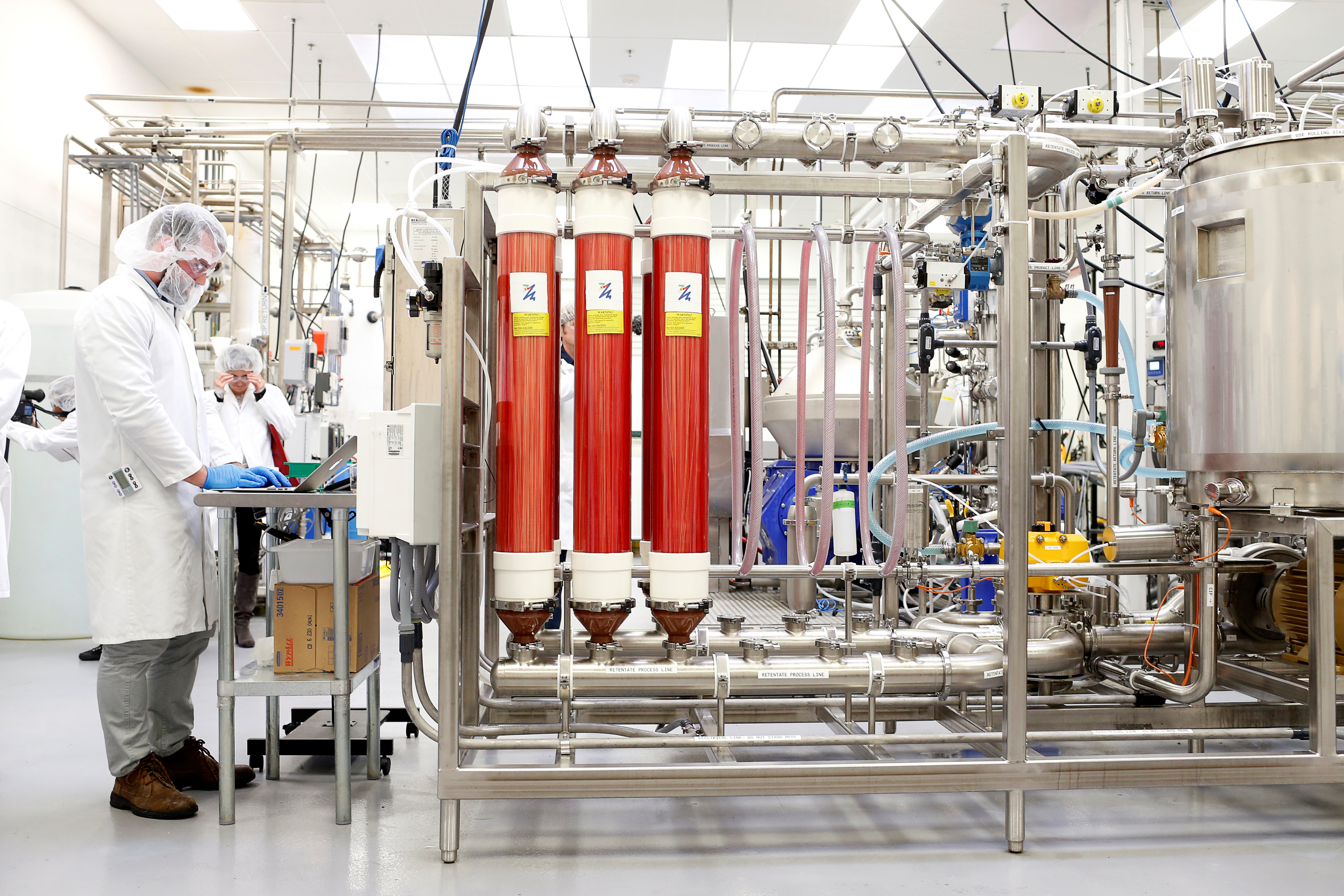Why cows are getting a bad rap in lab-grown meat debate
- From
-
Published on
01.11.18
- Impact Area

A small-scale production line of the leghemoglobin for a plant-based hamburger is displayed during a media tour of Impossible Foods labs and processing plant in Redwood City, California, US 6 Oct 2016 (photo credit: /Beck Diefenbach—S1BEUGSRCGAA).
By Alison Van Eenennaam, University of California, Davis
A battle royal is brewing over what to call animal cells grown in cell culture for food. Should it be in-vitro meat, cellular meat, cultured meat or fermented meat? What about animal-free meat, slaughter-free meat, artificial meat, synthetic meat, zombie meat, lab-grown meat, non-meat or artificial muscle proteins?
Then there is the polarizing ‘fake’ versus ‘clean’ meat framing that boils this complex topic down to a simple good versus bad dichotomy. The opposite of fake is of course the ambiguous but desirous ‘natural’. And modeled after ‘clean’ energy, ‘clean’ meat is by inference superior to its alternative, which must logically be ‘dirty’ meat.
The narrative posited by, for now let us call it cultured meat, proponents is that animal agriculture requires large amounts of land and water, and produces high levels of greenhouse gases (GHG). The environmental impacts of a product, such as a beef hamburger, is then compared to the anticipatory ones for producing a cultured hamburger patty through tissue engineering-based cellular agriculture.
I research how biotechnology can improve livestock production, and while it is true that conventional meat production has a large environmental footprint, the problem with this dichotomous framing is that it overlooks the rest of the story.
Cattle produce more than just hamburgers for well-off consumers, and they typically do so by utilizing rain-fed forage growing on non-arable land.
Additionally, cellular hamburger patties are themselves not an environmental impact-free lunch, especially from the perspective of energy use.
Read more: https://www.ilri.org/news/why-cows-are-getting-bad-rap-lab-grown-meat-debate
Related news
-

Mapping for Resilience: How Spatial Data is Transforming Karamoja Cluster
Ibukun Taiwo02.07.25-
Climate adaptation & mitigation
Pastoral communities in the Karamoja Cluster (a region spanning Kenya, Uganda, South Sudan, and Ethi…
Read more -
-

Building Resilience and Regeneration: The Central Highlands Ecoregion Foodscape (CHEF)
Sehlule Muzata02.07.25-
Climate adaptation & mitigation
At the CGIAR Sustainable Farming Program (SFP), we believe that collaboration is essential for trans…
Read more -
-

Planting with Precision: How Weather and Climate Information is Changing Bean Farming in Rwanda
The Alliance of Bioversity International and the International Center for Tropical Agriculture (CIAT)01.07.25-
Climate adaptation & mitigation
Imagine weather information as a GPS for farmers. Without it, the journey becomes uncertain, filled…
Read more -
